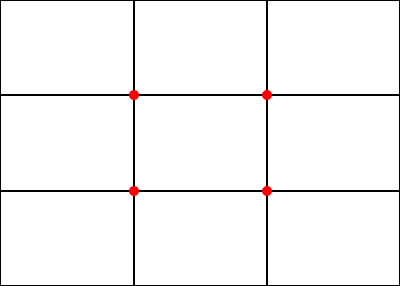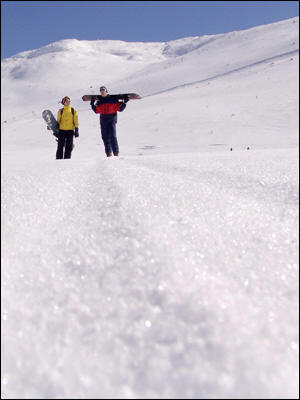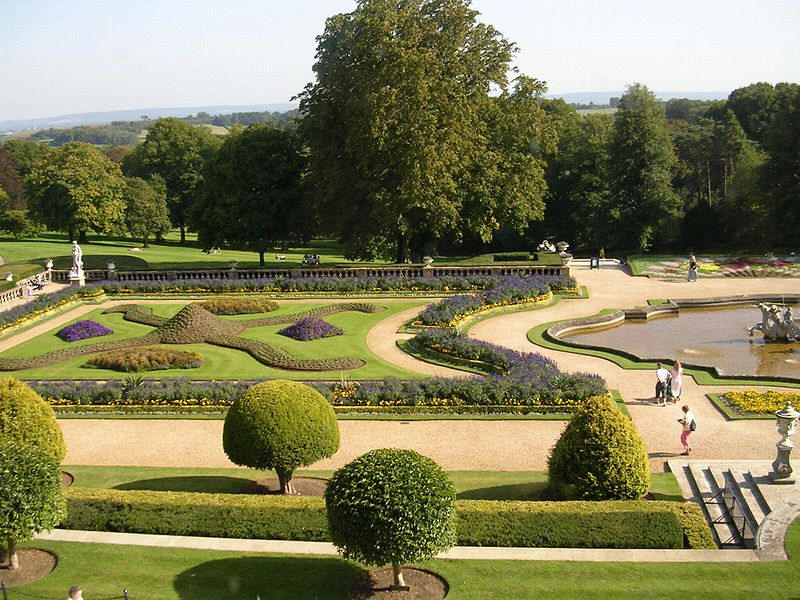Simple Composition
QUOTE
The saying "less is more" is often true in
image composition. The photo is often more beautiful and effective if
unnecessary elements are left out of the frame. A common mistake is to try to
include all possible things in one photo. It is often wise to include only one
clear center of interest into the photo.
When you are taking a photo, you should check if there are
any distracting elements on the edges of the frame. The photos on this page
are examples of simple yet effective compositions. In fact one reason why they
work is their simplicity.
UNQUOTE
Sounds about right.

Rule Of Thirds
QUOTE
Rule of thirds is one of the most well-known rule of
image composition. Rule of thirds is very easy to learn and adapt in
practice.
Often people place the main subject of the photograph into the middle of the frame. This only seldom yields to the best possible composition except if there is one clear subjects which is photographed very close. Of course there are exceptions to this.
Rule of thirds suggests to place the subject off the center.
According to rule of thirds the picture frame is mentally divided in to three
parts horizontally and vertically as in the
picture 1. The main subject of the photograph is then placed in one of
the four locations where the lines intersect. These intersections are marked
with red dots in the picture 1.
UNQUOTE
The red spots are the spots to go for.

PS Leave space in front of the subject rather than behind.
Get Close
QUOTE
It's often a
good idea to take the photo up close. It's not always even necessary to fit
the entire subject inside the frame. It might be enough, and even better, to
show just a part of the subject. Close up photos can be very compelling, and
they can tell the same story as photos where the subject is far away.
UNQUOTE
This one is close to.

Depth Of Field
QUOTE
Depth of
field is a characteristic of a camera that can be used to enhance the
image composition of the photo. Depth of field means the sharp area
surrounding the point of focus. The magnitude of the sharp area is affected by
several factors: distance between the camera and the subject, focal length and
aperture.
-
The closer the subject to the camera, the more shallow the depth of field.
-
The longer the focal length, the more shallow the depth of field.
-
The larger the aperture (smaller the F-number), the more shallow the depth of field.
It is important to understand how to affect the depth of field in order to utilize it in image composition. For example, the subject of the photo can be emphasized by isolating it from its surroundings by using a shallow depth of field. Shallow depth of field is usually used in portraits and large depth of field is usually used in landscape photos.
The dragonfly in
picture 1 has been isolated from its
chaotic surroundings by using shallow depth of field. By using shallow depth
of field the distracting background is blurred and only the dragonfly appears
sharp. Viewers eyes concentrate first on the sharp areas of the photo and so the
dragonfly gets all the attention.
UNQUOTE

Giving Space To Subjects Of The Photo
QUOTE
When we see a person looking at something, we often tend to look at the same
direction. We are also used to the idea that people, animals and vehicles have a
certain direction to where they are going. We assume that they move forward.
This is a matter that should be taken into consideration in
image composition. It's often distracting if there is a person, an animal or
a vehicle on the edge of the photo that seems to be moving away from the photo
and we can't see where to. It's also often distracting if there is a person on
the edge of the photo who is looking away from the picture. This kind of
composition should usually be avoided. The same principle also often applies to
stationary subjects that have a clear front and back side. A windmill is a good
example of a stationary subject that often desires more space on the front side
than on the back side..
UNQUOTE
This is not a very obvious point but
sounds reasonable.
Framing
QUOTE
Works of art are often surrounded by frames. Frames guide the eye of the viewer
inside of the picture. Frames also help to keep the eye of the viewer inside of
the picture. Frames can be easily added to digital photos in image processing
but that is not the only way to create frames. You can also include a frame
inside of your photo to enhance the composition. You can take advantage of
frames that can be found from the world around you. The kind of frames I am
talking about are for example branches of trees, doorways, tunnels or any other
elements that encircle the subject.

Picture 1. The photo above has been framed from the top left corner with the branches of a near-by tree.
Probably the most used frames which are found from nature are branches of near-by trees. These kinds of frames are easy to use because they can be found everywhere in the nature. Picture 1 shows an example of the use of branches as frames. It's not necessary to encircle the subject completely. Frames can be also used just on some edges of the photo. In picture 1 the branches frame the photo from the top left corner. These branches help to keep the eye of the viewer inside of the photo and also work as balancing element for the heavy forest in the opposite corner.
Framing With Elements of Nature
Picture 2. The background subject has been framed with foreground rocks.
Frames can be used to emphasize subject in the photograph.
Important subject of the photo can be emphasized by surrounding it with some
other element. In picture 2 the
background consisting of the sky, the sea and the clouds are surrounded with
the rocks on the foreground. The foreground rocks guide the viewers eye into
the background. Because the frame is a subject on the foreground it also
strengthens the feeling of depth in the photo.
UNQUOTE
Looks good to me.
Things To Avoid In Composition
QUOTE
One usually tries to compose the elements of a photograph
in a pleasing and interesting way. Often one tries to utilize certain rule or
style that has been verified to work. Picture composition can be approached also
from another perspective. When composing a photo one can think about things that
should be avoided in the composition. In my opinion, once the good composition
has been found, one should check certain things that can generally speaking be
considered as mistakes in image composition.
UNQUOTE
Avoid distractions from the real subject.

The chair legs do not help.
Pictures With Unusual Viewing Angles
QUOTE
Low
View Angle Composition
Picture 2 is taken from the ground level. The subject is left in the distance on purpose. The desired story is to tell that people are alone in the middle of nowhere. The placement of the people where chosen by using the rule of thirds. Additionally, many lines of the photo lead the eye to the subject, which enhances the composition. The low view angle ensures that the photo is something different than many other snapshots of the same situation.
The example photos on this page are both
taken from a low angle of view. That is only one way of creating unusual angle
of view. It's worth it to also try high view angle or any other view angle
that is something different than what everybody sees.
UNQUOTE

Waddesdon Manor
Has a Parterre

Rule of thirds? Check. Background and foreground? Check.